Complete Solutions to HOTS WORKSHEET of chapter ELECTRIC CURRENT AND ITS EFFECTS of Class 7 book with complete answers and questions
| Class 7 | PHYSICS |
| Chapter | ELECTRIC CURRENT AND ITS EFFECTS |
| BEIITIANS | HOTS WORKSHEET |
| Number Of Questions | 14 |
| Academic Year | 2023-24 |
It is impossible to construct a torch in the absence of
03:01View Solution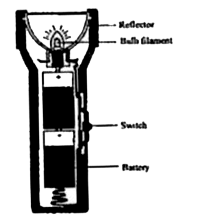
Among the labelled parts, current does not flow through the01:46View SolutionThe given figure shows a circuit with a cell connected to a bulb and a switch.
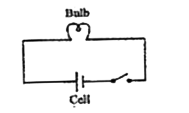
When the switch is closed, the bulb lights up because the02:06View SolutionSuraj has constructed a simple electric circuit. It consists of a bulb, a switch, and a cell, as shown in the given figure. However, the lengths of the wires are not sufficient. Hence, this circuit has two free ends. He has four objects namely a wooden gilli, a match stick, a pen cap, and a nail.
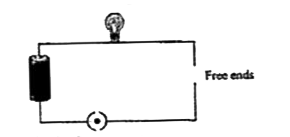
To glow the bulb, Suraj should connect the free ends with the01:39View SolutionRaju has constructed four different circuits with four bulbs, four cells, and four different objects, as shown in the given figure.
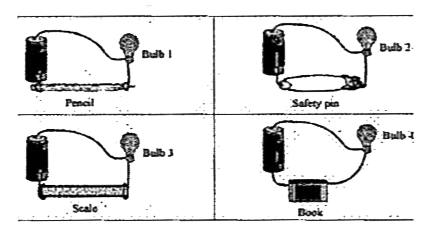
Which bulb will glow in the given circuits?03:15View SolutionRaju bought five similar bulbs and connected them with two cells to construct an electric circuit. The given figure shows the circuit constructed by Raju.
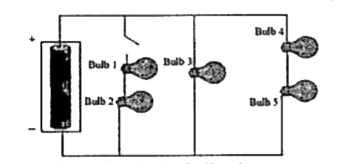
In the given circuit, the bulbs that would not glow are01:18View SolutionThe given figure shows two circuits, each consisting of a bulb and a cell. M and N are the terminals of II cell I and S and T are the terminals of cell II. The direction of current in the respective circuits is indicated by arrowheads.

Terminals M and T of the cells are02:11View SolutionA circuit is constructed using two torch bulbs and a cell, as shown in the given figure at the left. The figure at the right shows four arrows whose tips show their respective directions. These arrows have to be placed on each wire segments RS, RV, ST, and TV respectively, according to the directions of current.
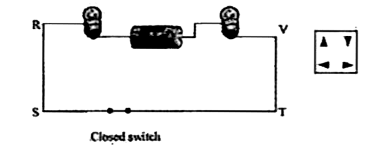
The given arrows that can be placed on wire segments RV, VT, ST, and RS are respectively02:08View SolutionVarious parts on the outer surface of an electric cell are labelled as I, II, III, and IV respectively in figure (a). In figure (b), an incomplete circuit is shown. M and N are the free ends of this circuit.

To make the bulb glow, free ends M and N of the circuit should be respectively connected to02:16View SolutionWhich of the following parts of a torch is not paired with its function?
01:52View SolutionRaj performs an experiment to know the conducting nature of some of the objects using a circuit, as shown in the given figure. He inserts some objects one by one between M and N and observes whether the bulb glows or not.
The objects that he inserted are eraser, key, plastic scale, glass bangle, bottle cap, nail, thermocol sheet, and wallet.

Raj will be able to glow the bulb if he inserts02:28View SolutionThe schematic diagram of an open circuit is shown in the given figure.
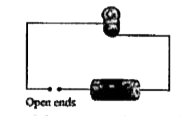
Opa ends Which of the following objects is inserted tightly in the gap to make the bulb glow?01:36View SolutionThe picture of a household torch is shown is the given figure.

The electricity required to operate a simple torch is provided by the01:14View SolutionDifferent arrangements of an electric bulb with an electric cell are shown in the given figure. The arrangements are labelled as M, N, S, and T respectively.
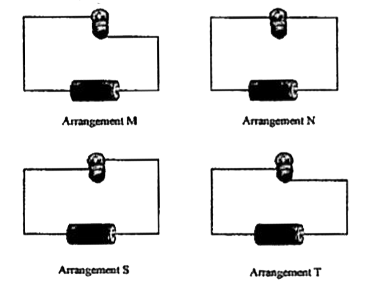
The bulb will glow in02:19View Solution
HOTS WORKSHEET questions and complete solutions for chapter ELECTRIC CURRENT AND ITS EFFECTS of BEIITIANS of Class 7
